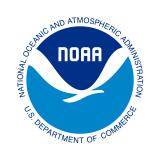California-Nevada Drought and Climate Outlook Webinar: November 22, 2021
According to the November 16 U.S. Drought Monitor, 100% of California/Nevada is in drought, with 70.6% in Extreme (D3) or Exceptional (D4) Drought. An exceptional atmospheric river (AR5) brought rain, snow, and wind to Northern California and Nevada in late October. This AR and recent storms improved drought conditions but have not come close to ending the drought for the region. The current drought developed over many months to years, leaving soils parched. Greater than normal winter precipitation will still be needed to replenish the soil moisture deficit and deliver normal spring streamflows.
The California-Nevada Drought Early Warning System November 2021 Drought & Climate Outlook Webinar is part of a series of regular drought and climate outlook webinars designed to provide stakeholders and other interested parties in the region with timely information on current drought status and impacts, as well as a preview of current and developing climatic events (i.e., El Niño and La Niña).






